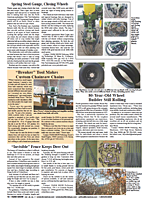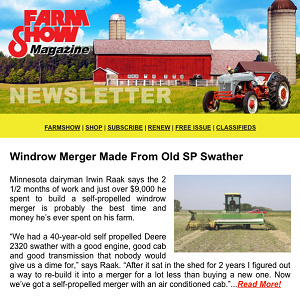You have reached your limit of 3 free stories. A story preview is shown instead.
To view more stories
(If your subscription is current,
click here to Login or Register.)
Making Cover Crops Profitable With Cattle
Cover crops pay off in multiple ways for Macauley Kincaid. He grazes them with his cattle herd. They improve his soil health, and he harvests their seed for his own use and to sell to other farmers.
“It all goes hand in hand,” says Kincaid. “I needed a way to have a return on investment with cover crops. The bes
..........
You must sign in, subscribe or renew to see the page.

You must sign in, subscribe or renew to see the flip-book
Making Cover Crops Profitable With Cattle
Cover crops pay off in multiple ways for Macauley Kincaid. He grazes them with his cattle herd. They improve his soil health, and he harvests their seed for his own use and to sell to other farmers.
“It all goes hand in hand,” says Kincaid. “I needed a way to have a return on investment with cover crops. The best way to turn covers into cash is with cattle.”
Letting cover crops go to seed and harvesting them to replant also brought multiple returns. Each year, the harvested seed was better suited for Kincaid’s soils and environment.
“The seeds’ epigenetics developed for our area,” says Kincaid. “Annual seeds adapt rapidly to the local environment.”
As other farmers noticed, he began harvesting more seed and selling it.
“Seed sales have spread by word of mouth,” says Kincaid. “Three years ago, our seed went on 50,000 acres within 100 miles of our place.”
Kincaid recommends particular cover crop mixes that will meet the farmer’s individual needs. He raises a wide variety of cereals, legumes, brassica and more. Everything from pumpkins to pearl millet, cowpeas and triticale, as well as wheat, barley and rye are on his list.
“Each cover crop does different things for an operation,” he says. “We try to never raise a monoculture. One may not do well with the weather in a given year, but another in the mix will have your back.”
Kincaid promotes multiple species cover crops to his customers.
“This year, 60 to 70% of our sales are mixes of multiple cover crops,” he says.
With all but his largest field fenced, Kincaid can graze nearly all of his cover crops not grown out for seed. He credits the cover crops, along with carefully selected genetics, for the success of raising his herd without any purchased minerals or supplements.
“Our herd gets by on forage alone,” says Kincaid. “I’ve documented them eating what others consider undesirable species, such as Canada thistle. It’s high in iodine, and they’ll seek it out.”
Kincaid notes that the same holds for milkweed and even poison hemlock.
“I haven’t lost an animal yet,” he says. “We need to look at plants as potential forage rather than weeds. Even multiflora rose can provide health benefits.”
Kincaid doesn’t recommend that others simply cut out mineral inputs. As he developed his system and herd genetics, he culled off any that did not do well. Additionally, his intensive grazing system rotates his 55 cows (plus calves) daily, or even multiple times a day. Today, his herd genetics, like his cover crops, are finding a market.
“Although I keep back my heifers as replacement stock, I have started selling some bulls,” he says.
Currently, Kincaid is working with the University of Missouri on the use of electronic collars to limit access to forage. If successful, it will enable the grazing of cover crops and crop residue without the expense of fencing.
Contact: FARM SHOW Followup, Macauley Kincaid, 17534 Baseline Blvd., Jasper, Mo. 64755.
To read the rest of this story, download this issue below or click
here to register with your account number.





